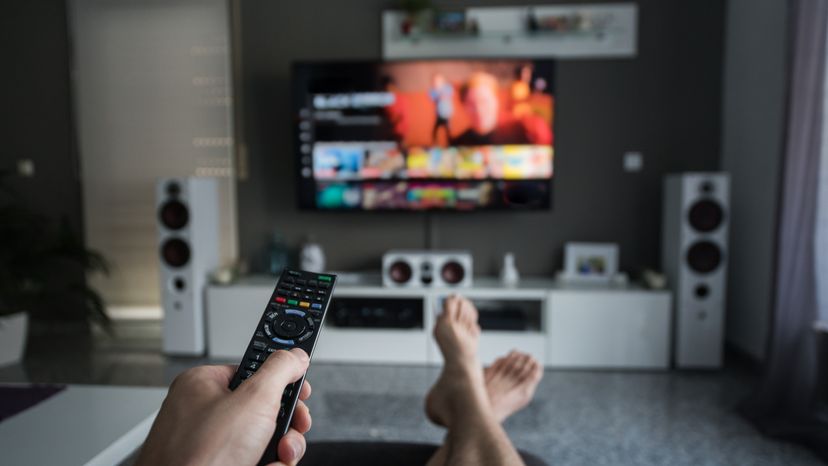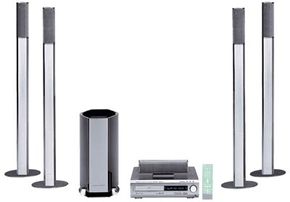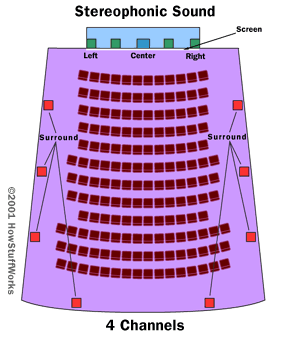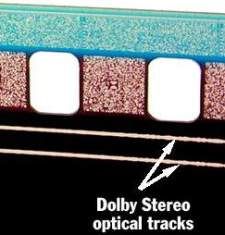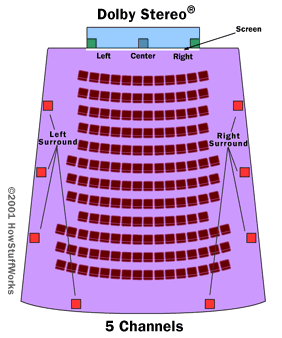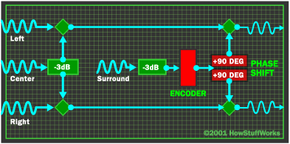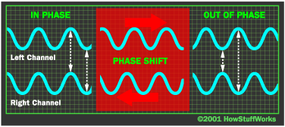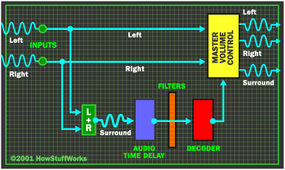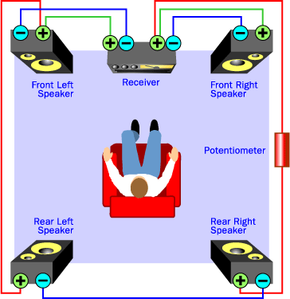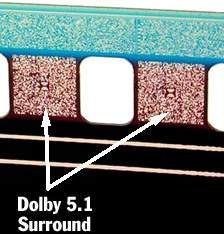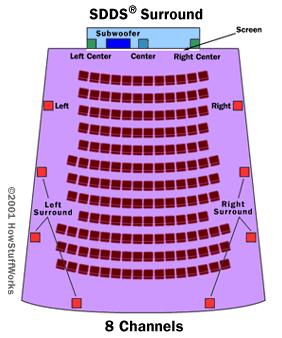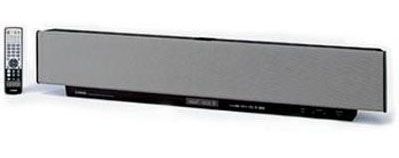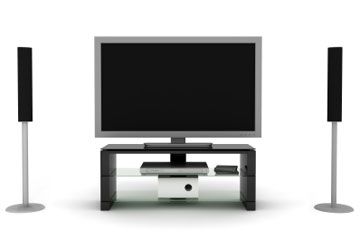The easiest way to access the surround-sound channel is to get a receiver with a surround-sound decoder. The decoder recognizes the out-of-phase information and extracts it into a third channel. To balance the sound, the receiver also boosts the channel to an appropriate level, and adds a slight time delay. It is possible to access surround sound with a standard stereo receiver, however, since all the information is actually included in the left and right channels.
To do this, get a pair of rear speakers and position them to the left and right of the listener. Connect the (+) amplifier terminal for the right channel to the (+) speaker terminal on the right rear speaker and the (+) amplifier terminal for the left channel to the (+) speaker terminal for the left rear speaker. Then you connect the two (-) terminals on the rear speakers.
The stereo signals that are in phase in the front channels cancel each other out in the rear speakers: The (+) currents for left and right will arrive at the (+) and (-) terminals of each speaker at the same time, so the current won't change the electromagnet at all.
But the signals that are out of phase in the stereo channels will form an alternating current -- the current for these signals will flow out of the (+) amplifier terminal for the left channel while the (+) speaker terminal for current is flowing into the (+) amplifier terminal for the right channel. The effect is that these out-of-phase signals move the electromagnet for the rear speaker, and so control the rear sound.
To set up a simple central speaker -- one that anchors the left and right stereo speakers -- just turn on your television. If it's a mono-speaker television, it will play both stereo channels mixed together. Stereo televisions will also work decently for anchoring purposes, because both channels emanate from the area of the television.
The other piece you need in this setup is a potentiometer, a device that can apply different degrees of resistance to a current, thereby reducing the voltage in a circuit. In this surround-sound setup, the potentiometer simply acts as a volume control for the rear speakers. You can hook it up anywhere along the circuit leading to the rear speakers. For detailed instructions on setting up this sort of homemade system, check out Chris Kantack's Surround Sound Information Source.
This setup won't give you the same quality surround sound as an actual surround-sound receiver, of course. But assembling a homemade system is a great exercise for understanding how analog surround sound works in the first place.
In the 1990s, a new kind of surround sound started popping up in theaters, and since then it has been gradually eclipsing the standard 4-2-4 approach. In the next section, we'll take a look at these new digital theater sound systems.
